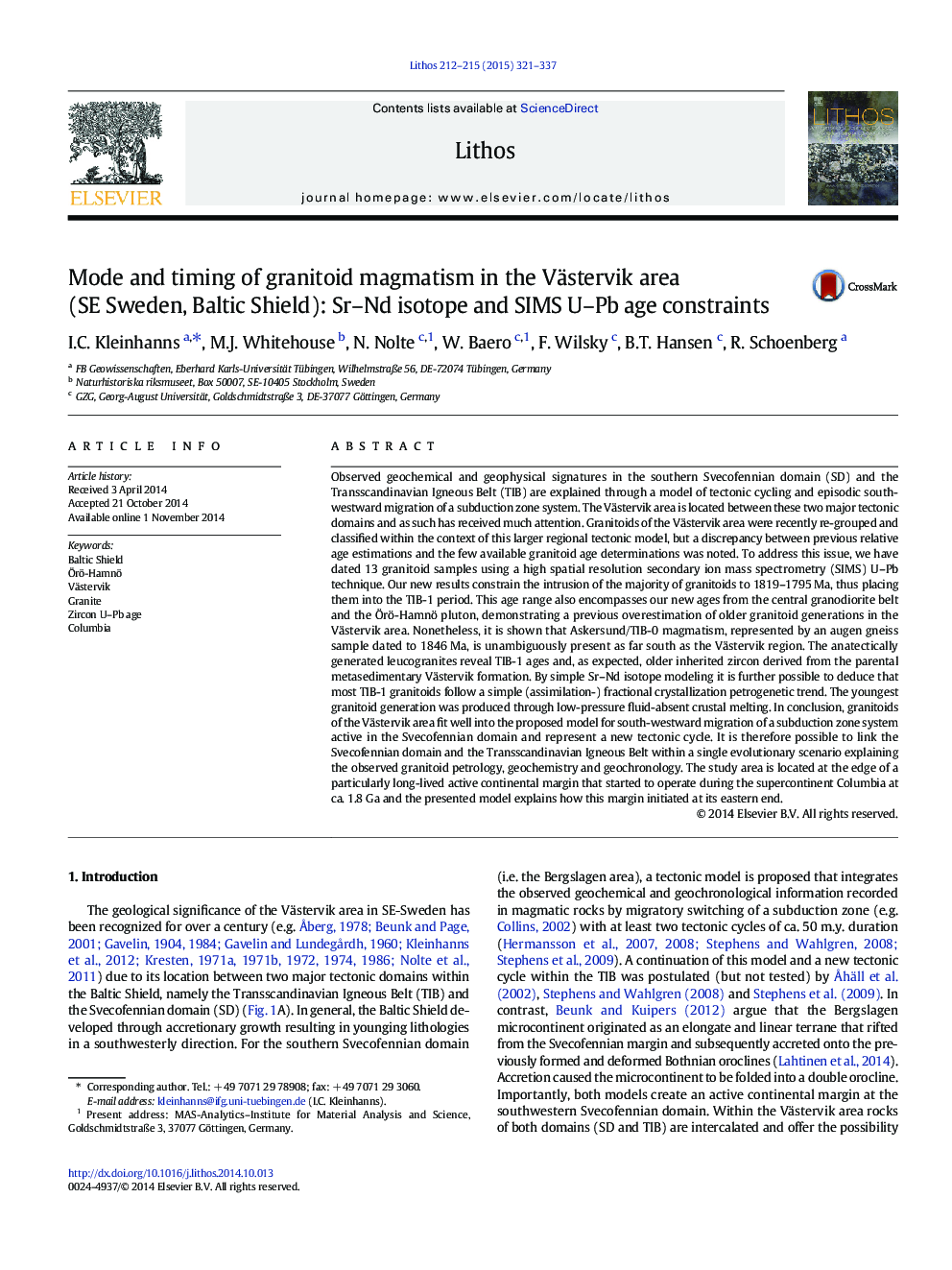| کد مقاله | کد نشریه | سال انتشار | مقاله انگلیسی | نسخه تمام متن |
|---|---|---|---|---|
| 4715804 | 1638669 | 2015 | 17 صفحه PDF | دانلود رایگان |

• The majority of Västervik granitoids intruded in the TIB-1 period.
• TIB-0 granitoids are present, but clearly subordinate.
• Most TIB-1 granitoids follow typical AFC-type petrogenesis.
• Anatexis producing youngest granitoids occurred under fluid-absent conditions.
• Consecutive model for the southern Svecofennian domain and the Transscandinavian Igneous Belt.
Observed geochemical and geophysical signatures in the southern Svecofennian domain (SD) and the Transscandinavian Igneous Belt (TIB) are explained through a model of tectonic cycling and episodic south-westward migration of a subduction zone system. The Västervik area is located between these two major tectonic domains and as such has received much attention. Granitoids of the Västervik area were recently re-grouped and classified within the context of this larger regional tectonic model, but a discrepancy between previous relative age estimations and the few available granitoid age determinations was noted. To address this issue, we have dated 13 granitoid samples using a high spatial resolution secondary ion mass spectrometry (SIMS) U–Pb technique. Our new results constrain the intrusion of the majority of granitoids to 1819–1795 Ma, thus placing them into the TIB-1 period. This age range also encompasses our new ages from the central granodiorite belt and the Örö-Hamnö pluton, demonstrating a previous overestimation of older granitoid generations in the Västervik area. Nonetheless, it is shown that Askersund/TIB-0 magmatism, represented by an augen gneiss sample dated to 1846 Ma, is unambiguously present as far south as the Västervik region. The anatectically generated leucogranites reveal TIB-1 ages and, as expected, older inherited zircon derived from the parental metasedimentary Västervik formation. By simple Sr–Nd isotope modeling it is further possible to deduce that most TIB-1 granitoids follow a simple (assimilation-) fractional crystallization petrogenetic trend. The youngest granitoid generation was produced through low-pressure fluid-absent crustal melting. In conclusion, granitoids of the Västervik area fit well into the proposed model for south-westward migration of a subduction zone system active in the Svecofennian domain and represent a new tectonic cycle. It is therefore possible to link the Svecofennian domain and the Transscandinavian Igneous Belt within a single evolutionary scenario explaining the observed granitoid petrology, geochemistry and geochronology. The study area is located at the edge of a particularly long-lived active continental margin that started to operate during the supercontinent Columbia at ca. 1.8 Ga and the presented model explains how this margin initiated at its eastern end.
Journal: Lithos - Volumes 212–215, January 2015, Pages 321–337